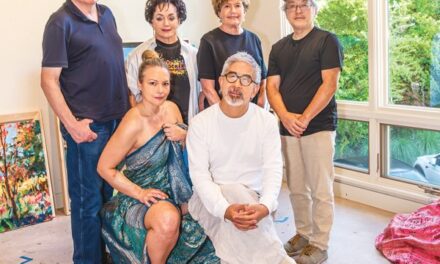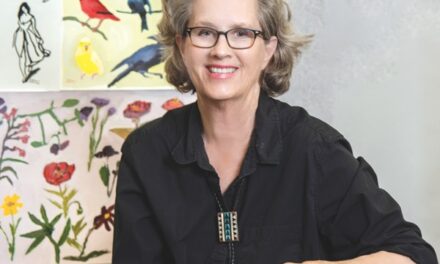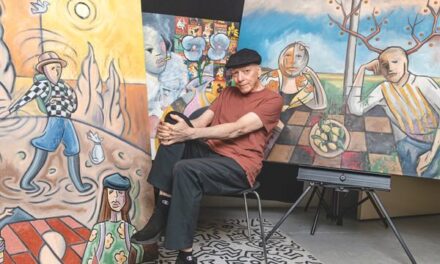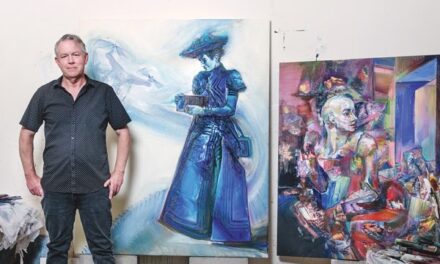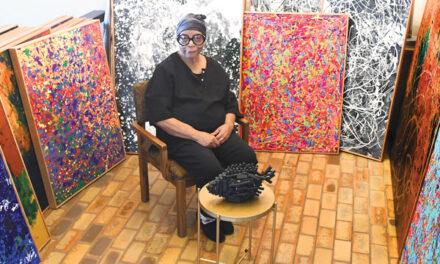For artist Laurelin Gilmore, “being publicly yourself is revolutionary.” Whether that means embracing your physical appearance, your personality or your place in the world, being as “you” as possible takes an act of bravery.
Lucky for us, Gilmore is one of those brave people—and she hopes her art helps others feel that way too.
“Anybody who’s a little bit different feels like a little bit of an alien,” explains the artist, who was diagnosed with vitiligo (a condition in which skin loses pigment in patches) at age 9. “Looking to the natural world to see that you’re not abnormal—that you’re not outside of the natural—helped me see the beauty of (being different).”
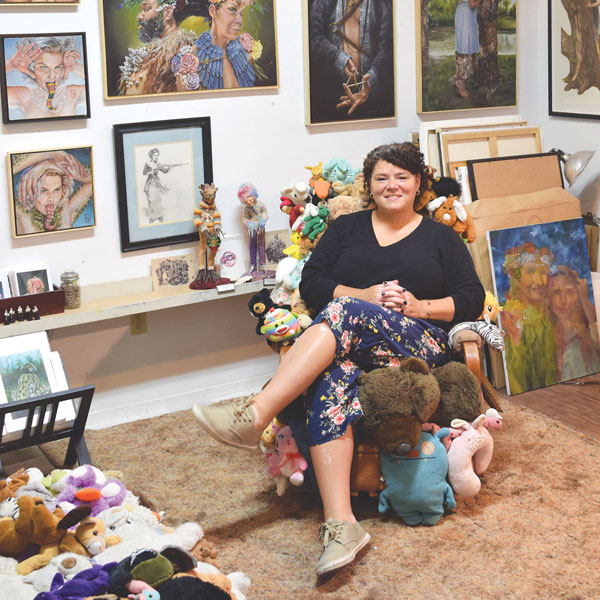
Gilmore explored her experience living with vitiligo in a 2015 solo show at Gallery 2110 in Sacramento called “SPOTLIGHT: A Show About Light Spots.” In the show, she depicted dappling found in nature—light in water or through a window, the scales of a koi fish, a horse’s coat, a bird’s wing—to reflect the dappling of her own skin.
This is not the first time Gilmore has used nature to explore humanity. In fact, much of her art is dedicated to depicting the chimera, a hybrid creature that is a favorite of Greek mythology. Gilmore’s chimeras often take the form of a human being beautifully merged with another animal or natural form.
“I was raised to have a deep respect for the natural world and its living systems,” says Gilmore, who was born in San Francisco and lived in Hawaii and Santa Rosa before she moved to Sacramento in 1998. “I like to explore where we humans fit into that. We’re not separate from other life forms. I feel like there’s a lot we can learn if we reconnect with our natural environment.”
To that end, Gilmore began to explore how human traits we describe with animal language—being in a “crabby” mood or acting “sheepish”—could be depicted visually. She’s also fascinated by the zodiac, “a built-in mythology a lot of us are familiar with” that helps us describe and define ourselves. The result of this exploration is a collection of stunning oil portraits of women (often modeled after Gilmore’s friends and daughter) with ram’s horns, webbed fingers, a serpent’s tongue, fish scales, damselfly and butterfly wings, the bell-shaped body of a jellyfish, antlers and crowns of flora. With clever titles that are as much a part of the artwork as the imagery, each painting asks the viewer to look—and self-reflect.
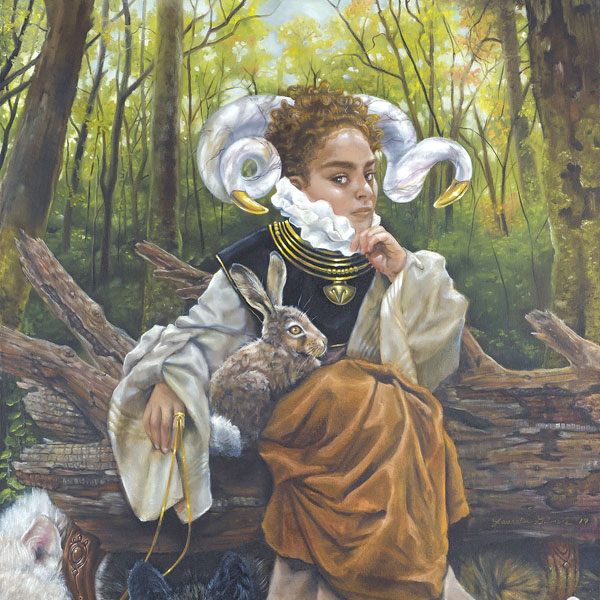
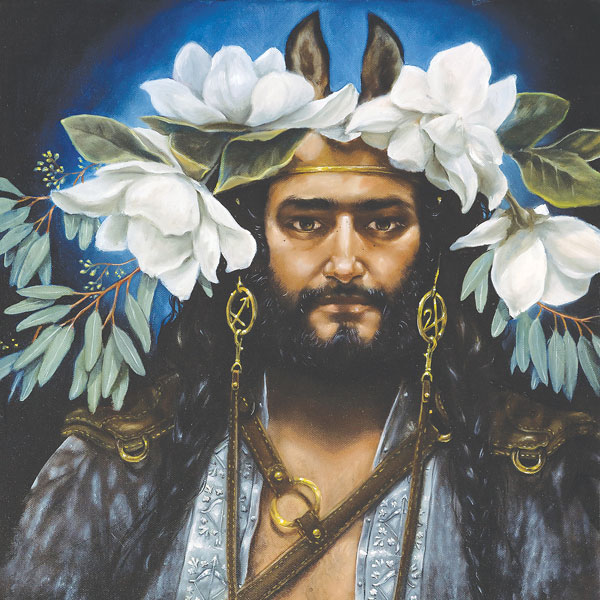
The animal-human hybrid imagery is also a creative expression of Gilmore’s own self-examination as a woman of “mixed race or blended ethnicity—split down the middle in a lot of ways,” as well as a woman of many talents. As a student at Sacramento City College, Gilmore earned associate’s degrees in both art and library science, uniting her lifelong love of art and books. After working in the Governor’s Office of Planning and Research for 10 years—a job she loved, but one that left little time to devote to her art—she and her husband agreed in 2010 she would pursue art full time.
That leap of faith paid off. Gilmore has now enjoyed a decade of solo shows, group exhibitions, awards and participation in special projects, such as the Ali Youssefi Project Artist in Residency. She had studio space first at the now-defunct Sacramento Art Complex on K Street and now at Verge Center for the Arts. She is also represented at Artize Gallery in Palm Springs and works part time at Richard L. Press Fine Books in Midtown, a repository of rare art books.
“Art is a universal language because everyone can interpret something from it,” says Gilmore, who’s also inspired by the work being done by Sacramento Alliance for Regional Arts and Black Artists Fund.
“Art begins a conversation the viewer can finish. If a piece comes from a place of purity and inquiry, the person standing in front of it will feel compelled to examine themselves and answer the question in front of them.”
For more information, visit laurelingilmore.com.
Jessica Laskey can be reached at jessrlaskey@gmail.com. Follow us on Facebook, Twitter and Instagram: @insidesacramento.




